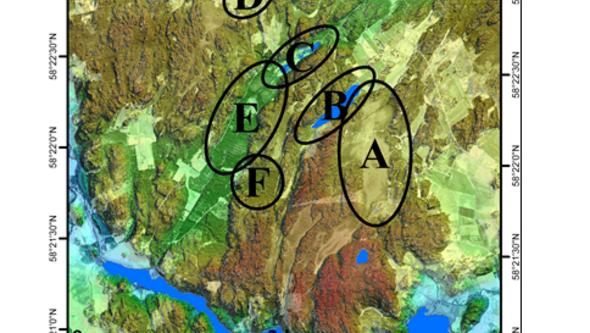Studies at Skogaryd station
The station promote studies of biogeochemical and phenological processes and atmospheric chemistry
SRC have mires (A), clear-cut sites (D), forests on podzol (D), umbrisol (F) and drained organic soil (E), lakes (B, C) and streams within the catchment (Fig.3). The monitoring program covers GHG gas flux from bogs and forests as well as from streams and lakes along with chemical parameters and flows in watercourses.

Themes that are studied or have been studied at the station
Below is a list of themes that are studied or have been studies at the station (more detail se the information about ongoing projects annex *, see also figure 1b).
• GHG emissions - determine net GHG (CO2, CH4 and N2O) balance from different biotopes
• GHG flux methods – improve methods for flux measurements on wetlands, lakes and streams; Micrometeorology, chambers techniques, and remote sensing
• Carbon budget – determine full Carbon balance in the catchment, net ecosystem carbon balance
• Phenology – improve spectral methods for phenological studies using remote sensing (drones, satellite and fixed spectral sensors). Improve IR image calibration methods. Observation and phenology cameras.
• Biogeochemical cycling – determine processes/regulation in the nutrient cycles (e.g. process studies, isotope labelling studies, trenching by separating root and mycorrhizal component of soil respiration)
• Tree physiology as affected by management and Climate Change - Sapflow, tree biomass, photosynthesis, tree rings
• Microbial studies to elucidate biogeochemical cycles – DNA sampling in the stream and lakes in the SITES water program, and research projects linking RNA/DNA to isotope studies using our automatic chambers
• Long-term monitoring – ICOS standards eddy-covariance flux measurements, abiotic/biotic parameters, SITES- Water (water flow, physical and chemical variables) measured in the catchment, SITES- Spectral
• Lake ecosystem functioning – AquaNet mesocosm infrastructure at lake Erssjön